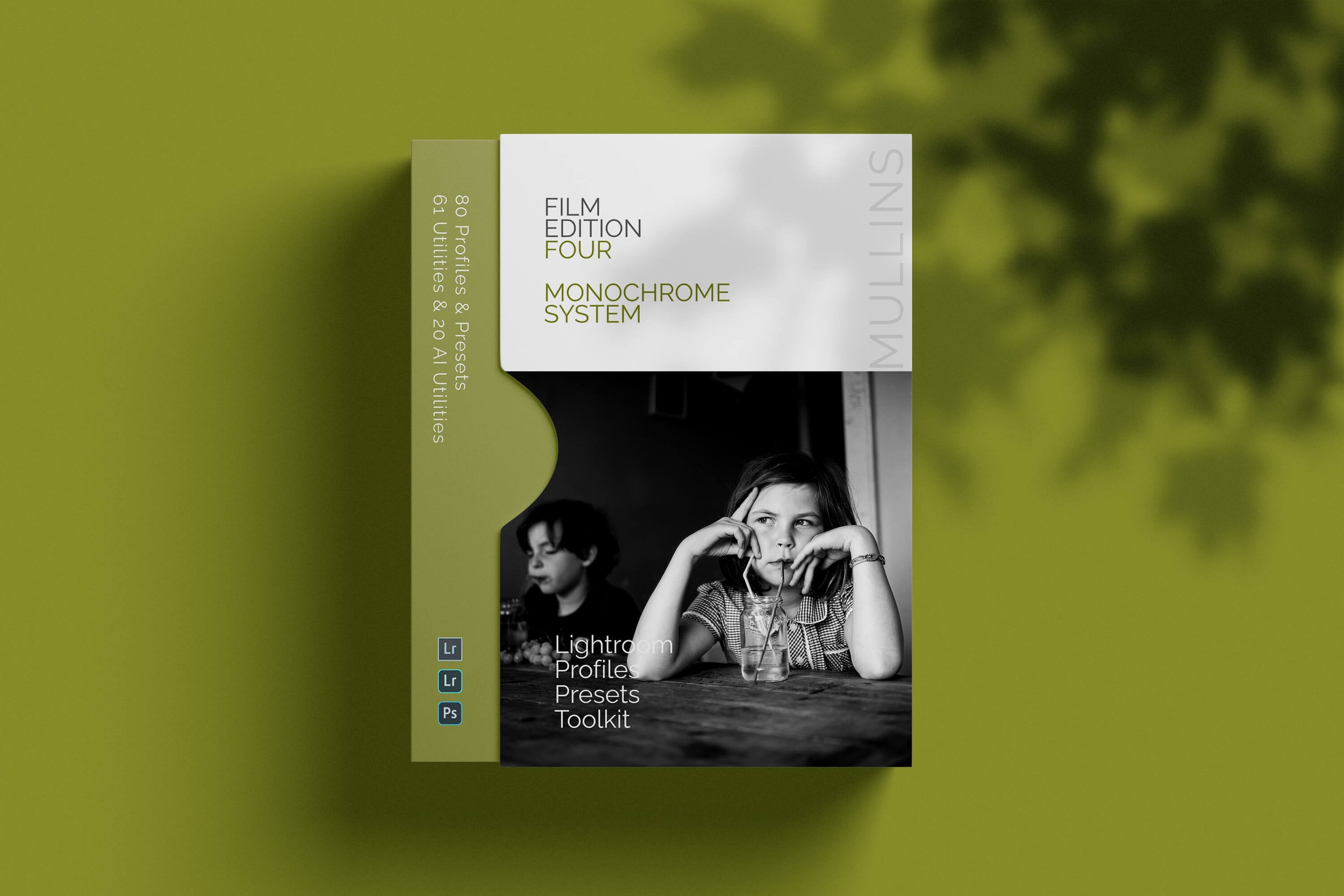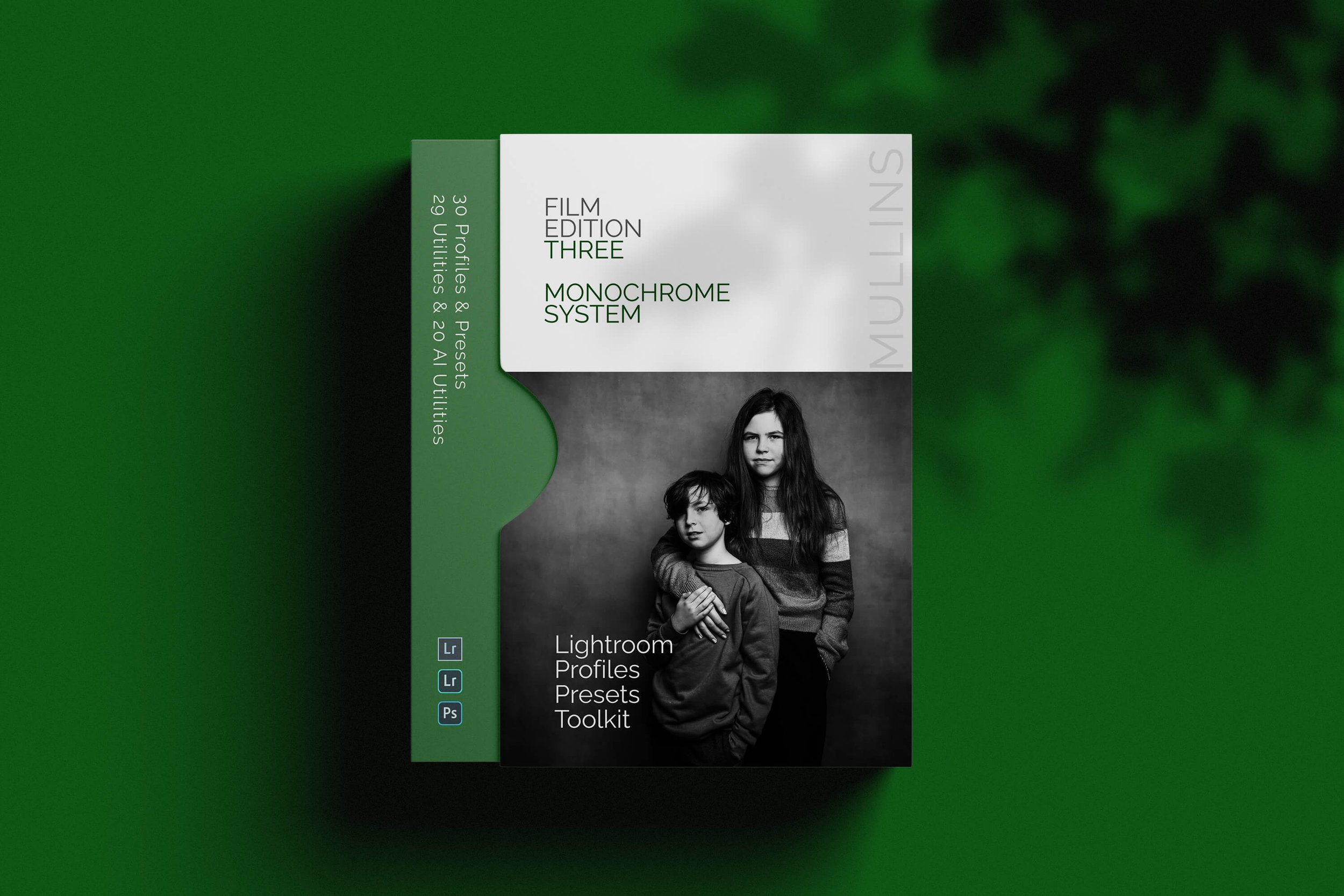GFX vs X-Series: two tools, one job
Short version: the GFX helps me make crafted pictures when I can control light and pace. The X-Series keeps me close to people when life is moving. I use both across weddings, street, family, portraits and commercial work.
Below is how I actually choose, with real examples, simple kit lists, lens FOV equivalents, storage realities, colour workflow, and a quick decision flow.
The mindset in real life
When I’m photographing people, my job is to be present without intruding. On a wedding day I’ll carry an X-Series body with a small prime because it lets me move, react, and stay human. If there’s a pocket of calm by a window later, I’ll may bring in the GFX for a single frame that holds together as a big print. But I generally keep the GFX for non-wedding photography work.
This article is part of my Fujifilm Learning Hub.
A growing collection of real-world guides, camera setup tips, lens suggestions by use-case, practical assignments, and buying advice with examples.
Prefer to see everything I write—brand-agnostic pieces on documentary & street work, reviews, tips, and the business of photography? Browse Main Articles & More.
How the pictures actually change
Resolution and micro-contrast: with the GFX, fine textures look “quietly rich” in prints. Skin, fabric, foliage gain depth. It isn’t about zooming in at 400% - it’s about how a 24×16 or 40×30 print “breathes”.
Depth of field: at similar framing and f-numbers the GFX gives thinner depth, which looks painterly on portraits. The X-Series gives me a touch more safety for movement, hugs, fast interactions.
Motion and hit-rate: X-Series AF, size and balance keep more keepers when kids, confetti and dance floors kick off.
Viewer experience: clients notice story first, then feel. If the image carries emotion, both systems deliver. If I know it will be printed large or used commercially, GFX earns its carry.



What I carry and why
Documentary wedding day
Primary: X-Series body, 18mm and 56mm primes. I can cover prep, ceremonies, hugs and chaos without thinking.
Add-on: GFX body with a normal or short tele for five to ten portraits shots when time, space and light allow.
Street
X-Series only. Small, responsive, invisible enough that people relax. I can try odd angles, reflections, and shoot all day without sore shoulders.
Family at home
X-Series primary. If there’s a quiet two-minute moment by a window, I’ll grab the GFX for one frame. One is enough.
Portraits & headshots
GFX when controlled. If I’m shaping light or I have five minutes to settle someone, the GFX works great.
X-Series when volume matters. Team headshots, windy pavements, quick turnarounds: small body, quick AF, done.
Commercial/sport/editorial
Brief decides. Texture, product, wardrobe details, controlled sets = GFX. Moving parts, tight schedule, handheld all day = X-Series. For creative sports work, the GFX often comes out the bag.
Field of view cheat sheet
| Look | GFX lens | X-Series lens | Notes |
|---|---|---|---|
| Wide environmental | 23mm | 16mm | Similar framing for scene-setting |
| Classic documentary wide | 30mm | 18mm | My go-to on X for people in context |
| Natural perspective | 45-50mm | 27-33mm | Everyday “normal” look |
| Portrait | 80-110mm | 56-75mm | Gentle compression, flattering faces |
Depth of field reminder: to keep a similar background blur between systems, you’ll generally stop the GFX down ~1 stop vs X-Series at the same framing.



Comparison Table
| Factor | GFX (Medium Format) | X-Series (APS-C) | What I choose |
|---|---|---|---|
| Mindset | Deliberate, planned, controlled | Agile, reactive, exploratory | GFX for set pieces, X for unfolding moments |
| Resolution & tonality | Higher resolving power, subtle tonality in prints | More than enough for albums, web, and large prints | GFX for gallery-size prints and texture-rich work |
| Depth of field control | Shallower at equivalent framing and aperture | Deeper at equivalent settings, easier to keep groups sharp | GFX for painterly portraits, X for group scenes |
| Autofocus & speed | Very capable, better when subject pace is predictable | Excellent tracking and burst rates for people in motion | X-Series for fast action and candid moments |
| Lenses | Optically superb, larger, premium pricing | Broad, lighter, some with lovely character | GFX for clinical perfection, X for character and choice |
| Weight & carry | Heavier, consider straps and pacing | Light, all-day carry without fatigue | X-Series when walking all day |
| Workflow & storage | Big files, slower ingest and culling, higher storage needs | Quick ingest, faster culling, lighter storage footprint | X-Series for speed, GFX when quality justifies it |
| Cost of system | Higher initial and lens costs | Better value and variety | Match investment to output needs |
| Best for | Portraits, editorial, controlled wedding portraits, commercial | Documentary weddings, street, family, travel, events | Use both when a job spans both worlds |
Handling and stamina
Weight: a GFX body with a fast prime will slow me physically quicker. That’s fine when I plan for it.
Balance: X-Series with small primes feels invisible. I can shoot one-handed, work at chest height, or tuck the camera in while moving through crowds.
Autofocus and success rate
GFX: absolutely capable with modern bodies, best when subjects are predictable and I can shape the moment.
X-Series: where I need AF to hang on while people turn, laugh, or cross. That extra 10-20% keeper rate in fast sections is real.
Workflow, storage and time
Big files are lovely until you’re behind on edits. Here’s the honest bit.
| Step | GFX | X-Series | Reality check |
|---|---|---|---|
| RAW size (typical) | ~100 MB | ~30-40 MB | Jobs scale fast with GFX |
| Ingest speed | Slower, benefits from faster cards/readers | Fast on standard kit | Shaves minutes per card |
| Culling | Slightly slower per 1k images | Noticeably quicker | Time adds up on big jobs |
| Backup footprint | 2-3× compared to X | Modest | Plan storage ahead |
My rule: X-Series covers the bulk so the edit stays light. GFX appears when the final use justifies the weight and storage.
Colour, consistency and clients
One benefit to Fujifilm is how familiar the colour feels across systems. If I need perfect alignment:
Set consistent film simulations in-camera for both if using JPEGs.
Use a simple base preset in Lightroom across both sets.
Nudge white balance and tint at the set level, not per image.
Soft proof once for prints. Done.
Clients see a unified story. They don’t care which body made which frame.
Simple decision flow
Do I need to be quick and close?
Yes → X-Series.Can I control the pace and light?
Yes → Add GFX.Is the final use a large print, hero asset, or product texture?
Yes → Prioritise GFX.Is the job volume-heavy or time-poor?
Yes → Prioritise X-Series.
Costs and value
If you’re building your first serious kit, an X-Series body with two primes will take you a very long way for less money and less weight.
If you already serve clients who buy wall art, albums with large features, or commercial placements, a GFX body used at the right moments pays its way without replacing your X-Series.
FAQ
-
Not if you deploy it selectively. I use it for set portraits and scene-setters. Candid coverage stays on X-Series.
-
Yes. Keep simulations consistent, grade in batches, and most viewers won’t notice a switch.
-
They notice story first. GFX’s advantage shows in very large prints and texture-rich frames. For web and albums, X-Series more than delivers.
-
If you mainly photograph people in motion, start X-Series. Add GFX when your work benefits from it and you can control moments to use it.
Lightroom presets used
All images in this article were edited with my own Lightroom presets for a consistent, documentary-friendly look across both GFX and X-Series files.
Closing thought
I don’t think of it as GFX vs X-Series. It’s GFX and X-Series, used intentionally. One keeps me nimble. One slows me down, in a good way. Both serve a purpose.








